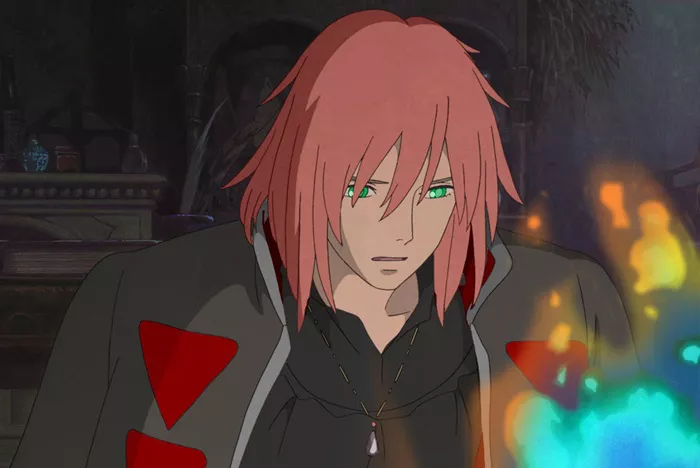The enigmatic character of Howl, from Diana Wynne Jones’ novel “Howl’s Moving Castle,” has captivated readers with his mysterious and complex nature. One of the most intriguing aspects of Howl’s character is the rumor that Howl eats girls’ hearts. This article delves into the reasons behind this perception, exploring the themes and symbolism within the story, Howl’s character development, and the broader implications of this dark reputation.
The Origins of the Myth
1. Introduction to Howl’s Character
Howl, a powerful and flamboyant wizard, is known for his vanity and eccentric behavior. His reputation for consuming the hearts of young girls adds a layer of danger and allure to his character. This myth is propagated by the citizens of Ingary, the fantastical setting of the novel, and serves to heighten the sense of mystery surrounding him.
2. The Role of Gossip and Perception
The rumor about Howl eating girls’ hearts is a result of gossip and exaggerated tales. In a world where magic is commonplace, such stories easily take root and spread. The fear and fascination with Howl are amplified by the mysterious nature of his moving castle and his elusive behavior.
Symbolism and Themes
1. Fear of the Unknown
The idea of Howl eating girls’ hearts symbolizes the fear of the unknown. Howl’s magical abilities and unpredictable nature make him an object of both fear and fascination. The townspeople project their anxieties onto him, creating a narrative that explains his strange behavior in a way that is both sensational and terrifying.
2. The Nature of Love and Heartbreak
The myth also reflects themes of love and heartbreak. In the novel, Howl is notorious for his romantic escapades and his tendency to pursue and then abandon young women. This behavior leads to broken hearts, both literally and metaphorically. The idea of him eating hearts can be seen as a metaphor for his cavalier attitude towards love and the emotional pain he causes.
Howl’s Character Development
1. From Selfishness to Sacrifice
Throughout the story, Howl undergoes significant character development. Initially, he is depicted as selfish and vain, more concerned with his appearance and avoiding responsibility than with the consequences of his actions. However, as the plot progresses, he begins to show a deeper capacity for love and sacrifice.
2. The Influence of Sophie
Sophie, the protagonist, plays a crucial role in Howl’s transformation. Her presence challenges Howl to confront his own flaws and fears. Through his relationship with Sophie, Howl learns to care for others and to take responsibility for his actions. This shift is symbolized by his willingness to protect and support Sophie, even at great personal cost.
The Role of Calcifer
1. The Heart Connection
Calcifer, the fire demon bound to Howl’s castle, holds a significant secret. It is revealed that Calcifer and Howl share a heart connection, which is a literal and metaphorical bond. Howl’s heart is tied to Calcifer, representing his vulnerability and the importance of his humanity.
2. The True Nature of Howl’s Power
The connection between Howl and Calcifer highlights the true nature of Howl’s power. It is not derived from consuming the hearts of young girls, but from a deeper, more personal source. This revelation dispels the myth and redefines Howl’s character as someone who is complex and multifaceted, rather than simply a heartless predator.
See Also: When Does the Paramount War Begin in One Piece?
Cultural and Literary Context
1. Gothic and Romantic Influences
The theme of consuming hearts has roots in gothic and romantic literature. These genres often explore the darker aspects of human nature, including themes of obsession, desire, and the supernatural. Howl’s character embodies these elements, making him a compelling and multifaceted figure.
2. Folklore and Mythology
Folklore and mythology also contribute to the symbolism of heart consumption. Stories of creatures or beings consuming hearts to gain power or immortality are prevalent across cultures. In “Howl’s Moving Castle,” this motif is used to create an aura of danger around Howl, while also exploring deeper themes of love and sacrifice.
Analyzing the Myth
1. Psychological Interpretation
From a psychological perspective, the myth of Howl eating girls’ hearts can be seen as a manifestation of collective fears and anxieties. The townspeople project their insecurities onto Howl, creating a narrative that explains his mysterious behavior in a way that is both frightening and fascinating.
2. Narrative Function
The myth serves a narrative function within the story. It creates suspense and intrigue, drawing readers into the world of Ingary and its inhabitants. The gradual unraveling of the truth behind the myth adds depth to Howl’s character and highlights the themes of love, fear, and redemption.
Conclusion
The rumor that Howl eats girls’ hearts in “Howl’s Moving Castle” is a multifaceted narrative device that serves to explore themes of love, fear, and transformation. While initially a symbol of fear and danger, it ultimately reveals deeper truths about Howl’s character and his journey towards self-discovery and redemption. Through his relationship with Sophie and his bond with Calcifer, Howl learns to confront his own flaws and embrace his humanity. This transformation challenges the initial perception of him as a heartless predator and redefines him as a complex and redeemable character. In the end, the myth of Howl eating girls’ hearts is a powerful example of how stories and rumors can shape our understanding of characters and themes within a narrative, adding layers of meaning and depth to the overall tale.


